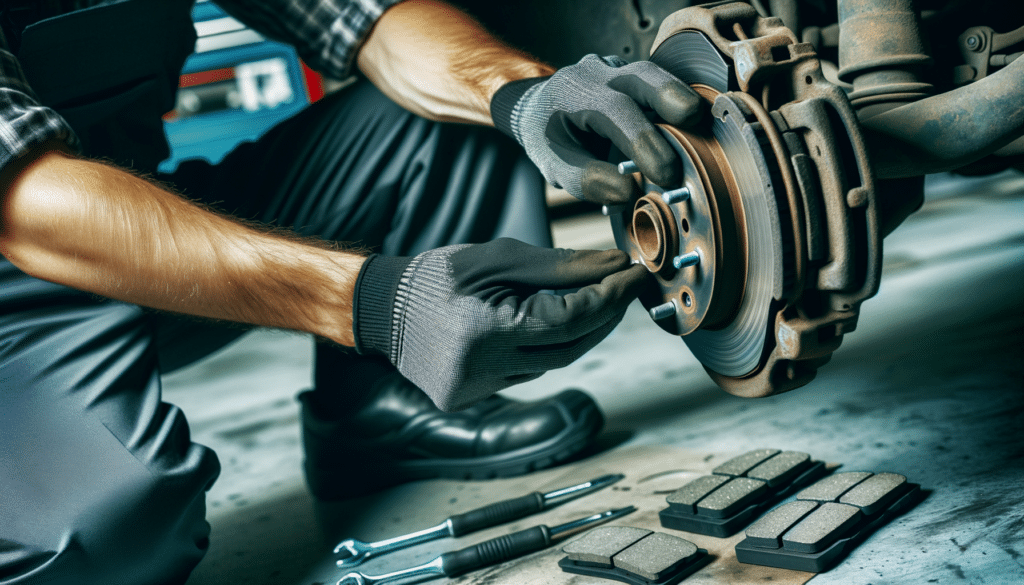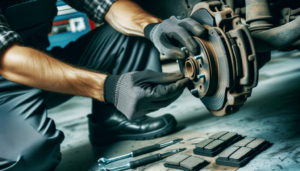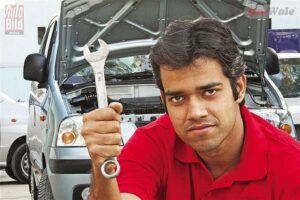Car repair can seem like an intimidating task, especially for beginners. However, with the right tools, knowledge, and mindset, repairing a car yourself can save money and give you a deeper understanding of how your vehicle works. In this guide, we’ll walk through some basic aspects of DIY car repair for beginners, providing a clear and practical approach to getting started.
Understanding the Basics of Car Mechanics
Before diving into repairs, it’s important to have a basic understanding of how your car works. Cars are made up of various systems that work together to keep the vehicle running smoothly. Some of the key systems include the engine, transmission, braking system, electrical system, and suspension. Each of these systems has specific components that need regular maintenance. Having a basic understanding of how these systems function can help you identify issues and tackle repairs confidently.
Safety First in Car Repairs
Safety is the most important aspect when performing any car repair. Working with heavy machinery and electrical components comes with inherent risks, so it’s essential to prioritize safety. Make sure to work in a well-ventilated area, preferably outdoors or in a spacious garage. Always use jack stands to support your car when working underneath it, and wear protective gear such as gloves, goggles, and closed-toe shoes. Keep a fire extinguisher nearby in case of emergencies, and disconnect the battery before working on any electrical components.
Essential Tools for DIY Car Repairs
To perform car repairs, you’ll need a set of basic tools. Investing in a high-quality toolkit will make your repair jobs easier and more efficient. Some essential tools include a socket set, screwdrivers, pliers, a torque wrench, and a car jack. Additionally, having some specialized tools like an oil filter wrench or a brake bleeder kit can be useful depending on the type of repairs you’re doing. A code reader can also be an invaluable tool for diagnosing engine problems, as modern vehicles come equipped with onboard diagnostics that provide error codes when something is wrong.
Changing Engine Oil: A Fundamental Skill
One of the most basic and essential car maintenance tasks is changing the engine oil. Regular oil changes keep your engine lubricated and running smoothly. To change your engine oil, you’ll need fresh oil, an oil filter, an oil filter wrench, and a drain pan. Start by lifting your car with a jack and placing it on jack stands for stability. Locate the oil drain plug underneath the engine and use a wrench to remove it. Let the oil drain into the pan, then remove the old oil filter and replace it with a new one. After that, replace the drain plug and refill the engine with the appropriate type and amount of oil. This task should be done every 3,000 to 5,000 miles, depending on your vehicle’s requirements.
Changing Brake Pads for Better Braking Performance
Brake pads wear down over time and need to be replaced periodically. Fortunately, changing brake pads is a relatively simple task that can be done at home with the right tools. Begin by removing the wheel to access the brake caliper. Use a wrench to remove the bolts holding the caliper in place, then carefully slide it off. You can then remove the old brake pads and install the new ones. Be sure to check the brake rotors for any damage or wear, as they may also need to be replaced or resurfaced. Once the new pads are installed, reassemble the caliper and wheel, and test your brakes to ensure they are functioning properly.
Replacing a Car Battery for Reliable Power
Car batteries typically last between three to five years, after which they may start to lose their charge or fail altogether. Replacing a car battery is a straightforward task that doesn’t require many tools. Begin by locating the battery under the hood of your car. Disconnect the negative terminal first, followed by the positive terminal. Remove any brackets or clamps holding the battery in place, then lift it out of the car. Insert the new battery and reconnect the terminals, starting with the positive terminal first. Be sure to tighten the connections securely, and check that your car starts properly after replacing the battery.
Fixing a Flat Tire: An Essential Skill
Getting a flat tire can be a frustrating experience, but knowing how to fix it yourself can save you time and money. Most cars come with a spare tire, a jack, and a lug wrench in the trunk. To fix a flat tire, begin by loosening the lug nuts on the flat tire before lifting the car with the jack. Once the car is lifted, fully remove the lug nuts and take off the flat tire. Mount the spare tire onto the wheel hub, then tighten the lug nuts by hand. Lower the car back to the ground and use the lug wrench to fully tighten the lug nuts in a star pattern to ensure even tightening. Be sure to check the tire pressure of the spare and drive cautiously until you can get the flat tire repaired or replaced.
Dealing with Minor Electrical Issues
Minor electrical issues, such as a malfunctioning headlight or a blown fuse, are common in cars and can be repaired at home. If a headlight goes out, you can easily replace it by accessing the headlight housing from under the hood. Disconnect the wiring, remove the old bulb, and insert a new one. For blown fuses, locate the fuse box in your car (usually under the dashboard or in the engine compartment) and use the diagram on the cover to find the faulty fuse. Replace it with a new fuse of the same amperage. Always be cautious when working with electrical components, and avoid performing electrical repairs if you are unsure of the cause of the problem.
Keeping Your Car Clean and Well-Maintained
Beyond mechanical repairs, keeping your car clean and well-maintained is an important aspect of car care. Regular washing and waxing not only improve the appearance of your car but also protect the paint and body from rust and corrosion. Cleaning the interior of your car, including the seats, dashboard, and carpets, helps maintain its value and comfort. Additionally, checking fluid levels such as coolant, transmission fluid, and windshield washer fluid ensures your car continues to run smoothly. Regularly inspecting your tires, belts, hoses, and lights can help you identify potential issues before they become serious problems.
When to Seek Professional Help
While many car repairs can be done at home, there are some situations where it’s best to seek professional help. If you’re dealing with major engine issues, transmission problems, or complicated electrical failures, it’s better to leave the repairs to a qualified mechanic. Additionally, if you feel uncomfortable or unsure about a particular repair, it’s always safer to consult a professional. Trying to fix something beyond your skill level can lead to further damage or create safety hazards.
Building Confidence in Car Repairs
As a beginner, it’s normal to feel hesitant or unsure about tackling car repairs. However, the more you practice, the more confident you’ll become in your abilities. Start with simple tasks like changing the oil or replacing a battery, and gradually work your way up to more complex repairs. There are plenty of resources available, including repair manuals, online tutorials, and community forums, where you can find guidance and support. Over time, you’ll gain a better understanding of how your car works and develop the skills to perform repairs with confidence.
The Benefits of DIY Car Repair
Learning how to repair your car not only saves money but also gives you a sense of independence and self-reliance. You won’t have to rely on mechanics for every minor issue, and you’ll be able to troubleshoot problems more effectively. DIY car repair also allows you to take better care of your vehicle, ensuring it runs efficiently and lasts longer. Additionally, working on your car can be a rewarding and satisfying experience, giving you a sense of accomplishment and pride in maintaining your own vehicle.
Conclusion
DIY car repair is a valuable skill that any car owner can develop with time and practice. By understanding the basics of car mechanics, investing in essential tools, and starting with simple repairs, you can build the confidence and knowledge to take care of your vehicle yourself. While some repairs should be left to professionals, many common issues can be fixed at home, saving you time and money.



